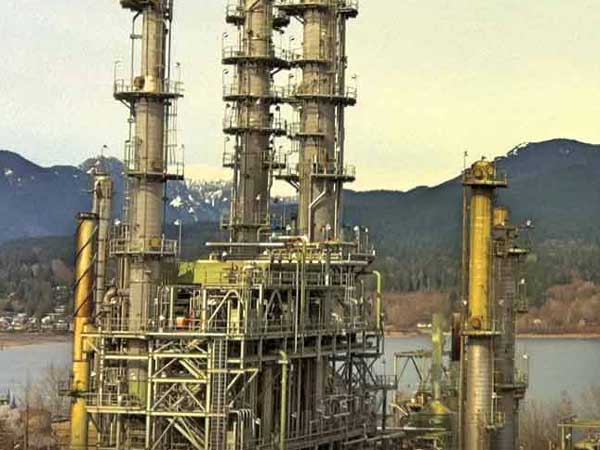
India's energy requirement is expected to grow at a CAGR of 4.6 per cent through 2030, making it the fastest growing energy consumer in the world. Over the past two decades, the Indian oil and gas industry has had a major transformation triggered by liberalization and increasing demand for oil and gas products. While India has become a regional leader in the downstream refining sector, the upstream and gas midstream sectors have lagged behind, resulting in India importing approximately 80 per cent of its crude oil requirement; and 49 per cent of its natural gas requirement and gas accounting for only 7 per cent of the energy mix.
The Indian oil and gas sector continues to be dominated by large public sector undertakings (PSUs) as they continue to have a higher market share across the value chain upstream, midstream, and downstream.
Indian natural gas supply
Import growth for Crude Oil and Natural Gas has been more pronounced in the last decade, though production has stagnated for oil and declined for natural gas
*There has been a decline in the production from the domestic fields in the recent years. Oil production experienced a 4.4 per cent decline post 2011 mainly due to the fact that major oil fields are reaching their maturity stage level and require enhanced oil recovery (EOR) technologies to boost and maintain production. Further, there has been a 39 per cent decline in gas production post-2010 due to sub-optimal performance of KG-D6 block and delays in development of other gas assets.
*The decline witnessed due to maturing fields has been further exacerbated by lower than expected outcome of the New Exploration Licensing Policy (NELP) rounds and limited exploration activity in India. Currently, only 22.8 per cent of the Indian sedimentary basin has been explored. Further, out of 360 blocks offered under NELP 84 are active, 170 have been relinquished and 106 were not awarded. In the NELP blocks, 152 discoveries have been made in 50 blocks, however, production has commenced only in 11 fields in 4 blocks over the last 10 years.
Status of exploration activity in India
The Government has ironed out a number of rigidities related to various regimes in order to push investments in the exploration & production sector. These initiatives are largely directed towards early monetisation of resources and focus on ramping up exploration activities in future.
Infrastructure and LNG outlook
India imports liquefied natural gas (LNG) to supplement the domestic gas for its downstream industries and the City Gas Distribution (CGD) network (referring to city or local natural gas distribution network). Robust demand growth of natural gas is expected due to increasing focus on lower emissions, competitive pricing and improved connectivity due to expansion of pipeline infrastructure.
Natural gas demand
Natural gas demand is expected to grow due to expansion of core consuming sectors. Refinery capacity is expected to reach 438.65 MT by 2030 through several brownfield and greenfield expansion projects. In fertiliser, 5 urea plants are being revived to reduce India’s import dependency whereas the petrochemical sector is expected to grow at 8-9 per cent over the coming decade in line with the economic growth. For City Gas Distribution (CGD), 23 CGDs are under construction and additional 90 GAs are expected to be commissioned by 2030.
Innovative applications of LNG usage in transportation, marine and bunkering are not expected to alter demand to a wide extent but will set the trend for greater penetration of natural gas.
Natural gas supply
Depending upon uncertainties in the exploration and production activities (E&P), the incremental domestic gas supply could range between 35 to 55 MMSCMD from conventional sources in east coast (KG-D5, D6) and through some Coalbed methane (CBM) and Marginal fields.
Downstream sector review
India is the 4th largest refiner globally and a net exporter of petroleum products. From a total capacity of 62 MMTPA in 1998, the Indian refining sector has increased nearly fourfold to reach a capacity of 247.6 MMTPA from 23 refineries. In FY17, India exported approximately 66 MMTPA (approximately one-fourth of the total refining capacity) of petroleum products valued at $29 billion. These exports helped in offsetting the large oil import bill incurred by the country.
The Indian petroleum refining industry has a significant presence of both private and public sectors with private companies facilitating healthy competition in the industry. Of the total installed capacity 35.6 per cent is operated by the private sector and the remaining 64.4 per cent is operated by the public sector.
The retail and marketing sector in oil and gas is largely held by public sector undertakings (PSUs) Oil Marketing Companies (OMCs) which own and operate 92 per cent of the market. With the recent deregulation of diesel, private sector companies have increased their interests in the domain and have announced growth plans.
Source: Deloitte


